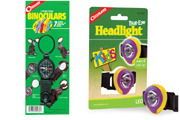If you're tired of wearing glasses that slide down your nose all the time, then why don't you try contact lenses on for size? Read on to find out everything you need to know about contacts, including which ones are right for you and how to take care of them properly.
What Are Contacts?
Contact lenses correct your vision just like glasses do, but they're virtually invisible - these little plastic discs fit right on your eye! Contact lenses can be worn by people who are nearsighted (you can't see stuff that's far away) or farsighted (you can't see stuff that's up close). But, if you have extra sensitive eyes, dry eyes, or severe allergies, you're better off sticking with glasses.
Contacts vs. Glasses
Maybe you hate the slip 'n slide action that your glasses make on their way down your nose, or you're fed up with people calling you Four Eyes. Or maybe you play a lot of sports and your glasses are getting in the way! Here's a bunch of reasons why people are chucking their glasses for a pair of contact lenses.
- Comfort - You can't feel them in your eyes and you don't have to constantly adjust them. Plus, they don't dig into your nose or behind your ears.
- Safety - Unlike glasses, contacts don't break or get knocked off if you get hit in the face in P.E. class.
- Looks - Contacts are cool if you're not into the appearance of glasses.
Types of Contact Lenses
- Soft Contacts - Made of polymer-plastic materials that are flexible, soft lenses are comfortable and can be worn for a long period of time. But, they rip easily if you don't handle them with care.
- Disposable Contacts - Soft lenses that are worn for a limited time and then thrown out so you don't have to bother cleaning them. They come in daily, weekly or monthly disposables.
- Extended Wear Contacts - Soft lenses than can be worn overnight or longer.
- Color Contacts - Soft lenses with color. They come in a range of shades, from green to purple, so you can change up the color of your eyes.
- Gas-Permeable Contacts - Softer than hard lenses, but harder than soft lenses. They allow more oxygen to pass through to your cornea, which reduces the risk of eye infections.
- Hard Contacts - These old-school lenses were probably worn by your grandparents, but no one wears them anymore. Made of hard plastic, they're uncomfortable to wear and difficult to insert and take out.
How to Take Care of Your Contacts
Your optician will teach you how to put your contacts in and take them out, but it's up to you to clean them properly. Always wash your hands with soap and warm water, and use contact lens solution to clean, rinse and disinfect your lenses every day. Never use water or saliva to clean because it'll damage them... plus it's just gross! You should also use enzyme cleaning tablets once a week to remove protein build-up on your contacts. This isn't the protein that you eat, but the kind that's in your tears and builds up on your lenses, making your vision cloudy. If you don't clean your contacts every day, or wear them for too long, you can get blurry vision, redness, eye dryness, or eye infections like corneal ulcers since your eyes aren't getting enough oxygen. So be sure to give your eyes a break by wearing glasses at night.
Did You Know?
- The first contact lenses were made of glass! Invented by Adolf Fick in 1887, they irritated the eyes and couldn't be worn for long periods of time.
- About 125 million people wear contact lenses worldwide.
Related Stories:
- Looking After Your Eyes
- Protect Yourself Against Pink Eye!
- Taking Care of Your Teeth
- More Health and Body Info!

































